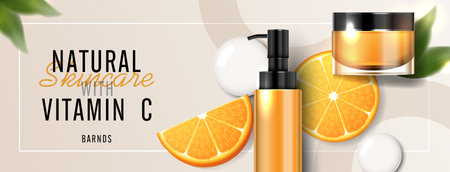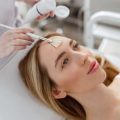Understanding Microdermabrasion
If you’ve ever browsed the menu at an American dermatology clinic or a trendy spa, chances are you’ve seen microdermabrasion listed as a go-to treatment for smoother, brighter skin. But what exactly is microdermabrasion? In simple terms, it’s a non-invasive cosmetic procedure that gently exfoliates the outermost layer of your skin using fine crystals or a diamond-tipped wand. This process removes dead skin cells and stimulates new cell growth, leaving your face feeling refreshed and looking more radiant. When booking a session, you might hear professionals mention “crystal microdermabrasion” (using tiny crystals to slough away skin) or “diamond-tip microdermabrasion” (where a diamond-coated device is passed over your skin). You’ll also likely come across terms like “exfoliation,” “cell turnover,” and “skin resurfacing.” Unlike chemical peels or more intense treatments, microdermabrasion is popular in the U.S. because it’s relatively quick, painless, and has minimal downtime—making it easy to fit into even the busiest American lifestyle. If you’re serious about holistic skincare, understanding these basics can help you decide if this gentle but effective treatment deserves a spot in your routine.
Benefits for Skin Health
When it comes to achieving smoother, clearer, and more radiant skin, microdermabrasion has earned a loyal following among skincare enthusiasts across the U.S. This non-invasive treatment works by gently exfoliating the outermost layer of dead skin cells, which not only refreshes your complexion but also encourages the natural regeneration process. For consumers who want real results without harsh chemicals or lengthy recovery times, microdermabrasion stands out as an effective option that fits well into a holistic skincare routine.
How Microdermabrasion Delivers Noticeable Improvements
From personal experience and countless customer testimonials, microdermabrasion isn’t just hype—it really can make a difference you can see and feel. After just one session, many users report their skin feels softer and looks brighter. Over time, regular treatments can help reduce the appearance of fine lines, acne scars, and sun damage. What’s impressive is how this simple step can boost the effectiveness of other skincare products; with the top layer of dead skin cleared away, serums and moisturizers absorb better, giving you more bang for your buck.
Real-Life Results: What Users Notice
| Skin Concern | User Feedback After Microdermabrasion |
|---|---|
| Dullness | Smoother texture and visibly brighter skin tone |
| Fine Lines | Softer appearance; makeup applies more evenly |
| Clogged Pores & Acne Scars | Pores look smaller and scars gradually fade with consistent treatments |
| Dry Patches | Skin feels hydrated and balanced after removing buildup |
Why American Consumers Trust Microdermabrasion
Many U.S. consumers appreciate that microdermabrasion offers professional-level results without downtime—something that fits busy lifestyles. Whether done at a dermatologist’s office or with an at-home device, users love that they can see real improvements without breaking the bank or risking harsh side effects. The consensus? If you’re seeking a practical step to elevate your holistic skincare routine, microdermabrasion is definitely worth considering.

3. Combining Microdermabrasion with Other Skincare Practices
If you’re serious about your skin, microdermabrasion isn’t just a one-and-done treatment—it’s a strategic part of a broader skincare game plan. Here’s how it slots into an American, real-life routine (and what your esthetician probably wishes you knew):
Microdermabrasion as the Ultimate Prep Step
Think of microdermabrasion as hitting the reset button on your skin. By gently exfoliating away dead cells and surface debris, it preps your face to drink in all the good stuff you apply afterward. Post-treatment, your skin is more receptive to serums, moisturizers, and even SPF—so those expensive products finally have a chance to work their magic.
Layering: What Goes On After Microdermabrasion?
Your esthetician will likely suggest keeping things simple but targeted after a session:
- Serum First: Right after microdermabrasion, opt for a calming serum loaded with antioxidants or hyaluronic acid. Your freshly buffed skin can absorb these ingredients way better.
- Moisturizer Next: Seal in hydration with a gentle, non-comedogenic moisturizer. Think fragrance-free and soothing—your skin’s been through enough for one day.
- Never Skip SPF: This step is non-negotiable. Your skin is extra sensitive to UV rays post-exfoliation, so slap on that broad-spectrum sunscreen even if it’s cloudy out or you’re working from home.
Pro Tips from U.S. Estheticians
Many American estheticians recommend spacing out active treatments like retinoids or chemical exfoliants for at least a few days before and after your appointment. Listen to their advice—they’re not just selling you products, they genuinely want your skin to thrive without irritation or over-exfoliation.
Making Microdermabrasion Work in Real Life
If you’ve ever wondered how influencers and beauty editors keep their skin looking so fresh, this is part of their secret sauce: regular professional treatments combined with smart at-home routines. Microdermabrasion isn’t an everyday thing (once every 4–6 weeks is typical), but pairing it with mindful product use maximizes results—without overwhelming your skin.
The takeaway? In an American skincare context, microdermabrasion works best when it’s part of a holistic approach—not the whole story. Layer thoughtfully, listen to pro advice, and always respect your skin’s limits.
4. Frequency and Timing: Finding the Right Balance
When it comes to adding microdermabrasion to your holistic skincare routine, timing is everything. Many Americans wonder, “How often should I get microdermabrasion?” The answer depends on your skin type, lifestyle, and even the time of year.
How Often Should You Book a Session?
Most dermatologists and estheticians in the U.S. recommend starting with a series of treatments spaced about 2–4 weeks apart. For ongoing maintenance, many people find that monthly sessions are enough to keep their skin looking fresh without overdoing it. Overuse can lead to sensitivity or irritation, especially if you’re using other active skincare ingredients at home.
| Skin Type/Condition | Recommended Frequency |
|---|---|
| Normal/Combination Skin | Every 4 weeks |
| Oily/Acne-Prone Skin | Every 2–3 weeks (as tolerated) |
| Sensitive/Dry Skin | Every 6–8 weeks or less |
| Mature/Aging Skin | Every 4–6 weeks |
| Treating Hyperpigmentation/Scarring | Every 2 weeks (short-term series) |
Timing Your Treatment: What Americans Should Consider
Seasonal Factors: In the U.S., weather plays a huge role in how your skin reacts to exfoliation. During harsh winters or peak summer sun, your skin may be more sensitive. Consider booking treatments during milder seasons—spring or fall—when your skin barrier is stronger.
Big Events: If you have a wedding, reunion, or important event coming up, schedule your microdermabrasion session at least a week in advance. This gives your skin time to heal and glow naturally.
Additional Tips for Scheduling Microdermabrasion in America:
- Avoid scheduling right before or after intense outdoor activities like beach vacations or ski trips—your skin will be more vulnerable to sun damage and windburn.
- If you’re using prescription retinoids or strong exfoliants, pause them a few days before and after treatment to minimize irritation.
- If you have an active breakout, cold sore, or sunburn, reschedule your appointment until your skin calms down.
- Pencil in regular appointments on your calendar (think first Saturday of every month) to make consistency easy—because in American culture, routines are key!
The bottom line? Microdermabrasion works best when it’s part of a bigger plan tailored to you—and finding the right balance means listening to both expert advice and what your own skin is telling you.
5. Potential Pitfalls and Safety Tips
If you’re considering adding microdermabrasion to your holistic skincare routine, it’s smart to be aware of the potential downsides and safety concerns. First things first—microdermabrasion isn’t for everyone. If you have active acne, rosacea, eczema, or super sensitive skin, this treatment can actually make things worse. People with darker skin tones should also check with a dermatologist first, since hyperpigmentation is a real risk.
Over-exfoliation is another biggie. It’s tempting to chase that fresh glow by booking more frequent treatments or using at-home kits too often, but that’s a fast track to irritation, dryness, and even breakouts. Moderation is key: most dermatologists recommend spacing sessions about two to four weeks apart, and always following up with gentle moisturizers and SPF.
Real talk—side effects aren’t rare. After a session, it’s normal to notice some redness or mild swelling for a day or so. Sometimes people experience tiny abrasions, sensitivity to sunlight, or in rare cases, small breakouts. The trick is to listen to your skin; if you notice prolonged redness, pain, or unusual changes, don’t just power through—reach out to a pro.
Bottom line? Microdermabrasion can play a positive role in your holistic skincare game plan if you know the limits and respect the process. Start slow, keep expectations realistic, and always prioritize the health of your skin over short-term results.
6. Personal Stories and Consumer Insights
When it comes to microdermabrasion, nothing speaks louder than real-life experiences from people who have tried it as part of their holistic skincare routines. Across the U.S., everyday Americans share a mixed bag of results—some rave about the glow-up, while others warn about unrealistic expectations.
What Worked for Real People
Many consumers report that microdermabrasion leaves their skin noticeably smoother and more radiant after just a few sessions. One popular sentiment is that regular treatments help keep breakouts in check and make other skincare products absorb better. Folks with mild acne scars or rough patches often say microdermabrasion gave them newfound confidence in their skin’s texture. For busy moms and professionals alike, the quick, no-downtime aspect fits right into packed schedules.
What Didn’t Work (And Why)
On the flip side, some users admit they were disappointed when expecting dramatic changes overnight. A number of reviews caution that if you have very sensitive skin or certain medical conditions (like rosacea), microdermabrasion can leave your face red or irritated. Others found that missing out on aftercare—like moisturizing and using sunscreen—led to less-than-stellar results or even dryness and flaking.
Tried-and-True Tips from Consumers
If you’re considering adding microdermabrasion to your holistic routine, listen to those who’ve been there: start slow, especially if your skin is sensitive, and always patch test beforehand. Consistency matters—a single session won’t change everything, but regular appointments can add up to real improvements. Don’t skimp on hydration post-treatment, and make sunscreen your best friend. Finally, several Americans stress the importance of professional guidance: consult with a licensed esthetician who understands your unique skin needs before diving in.
By weighing these honest experiences, you’ll be better equipped to decide whether microdermabrasion deserves a spot in your own holistic skincare journey—and how to make every session count.


